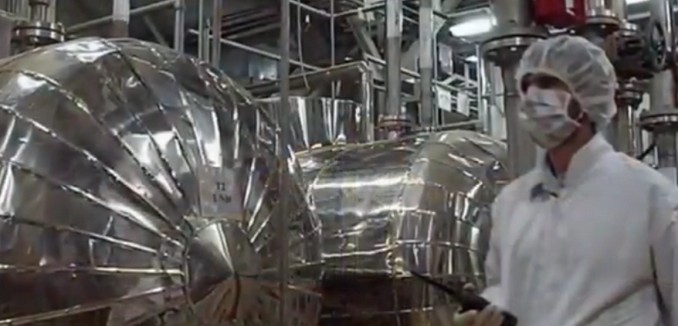Over the course of the nuclear negotiations, the administration abandoned all of the “red lines” it set out early during its engagement with Iran, Michael Rubin, a former Pentagon official, wrote today in an op-ed published in The New York Post.
In 2013, Kerry declared of the Iranians, “There is no right to enrich.” Two years later? The final agreement allows Iran to keep 5,000 centrifuges, 2,000 more than Pakistan had when it secretly built a nuclear arsenal.
Nor will Iran be limited to current technology; Kerry has ceded Iran’s right to experiment with new-generation centrifuges exponentially more powerful than Iran has now.
But centrifuges are only one part of Iran’s illicit program. In 2013, Kerry told Congress the “whole point of the [sanctions] regime” was to force Iran to “dismantle its nuclear program.” But the deal to which Kerry agreed lets Iran keep everything in place.
Rubin notes a number of other requirements that the administration dropped, including the shuttering of the underground enrichment facility at Fordow, subjecting Iran to “anytime, anywhere” inspections, and accounting for Iran’s past nuclear research. In addition, at the last minute, the administration capitulated to an Iranian demand to lift a conventional arms embargo five years into the agreement, and end restrictions on ballistic missile trade after eight years.
Rubin argued that, given these reversals, “congressional critics might base their opposition” to the deal using the administration’s own former standards.
In contrast to the administration’s retreats, former Defense Department official Dov Zakheim noted that Iran has stood firmly by its demands. He listed a number of these positions, including:
– All economic and financial sanctions against Iran will be removed through a new Security Council resolution.
– All nuclear facilities in Iran will retain their activities. Contrary to the initial demands of the other side, none of the nuclear sites will be shut down.
– The policy to prevent Iran’s enrichment activities failed. Iran will continue nuclear enrichment.
– Iran’s nuclear infrastructure will be preserved. No centrifuge will be [destroyed] and research and development on all advanced centrifuges including IR-4, IR-5, IR-6 and IR-8 will continue.
In a separate article for the American Enterprise Institute, Rubin observed that in at least one instance the administration attempted to deny that it had reversed its positions.
But what about “Any Time, Any Where” inspections? That was a promise made by Deputy National Security Advisor Ben Rhodes, for example, here. On July 14, however, he denied ever saying that. How inconvenient video records can be.
In addition to Rhodes, Energy Secretary Ernest Moniz, who was involved in technical aspects of the talks, said that “anytime, anywhere” inspections were essential to securing a verifiable deal.
[Photo: sonic boom / YouTube ]




